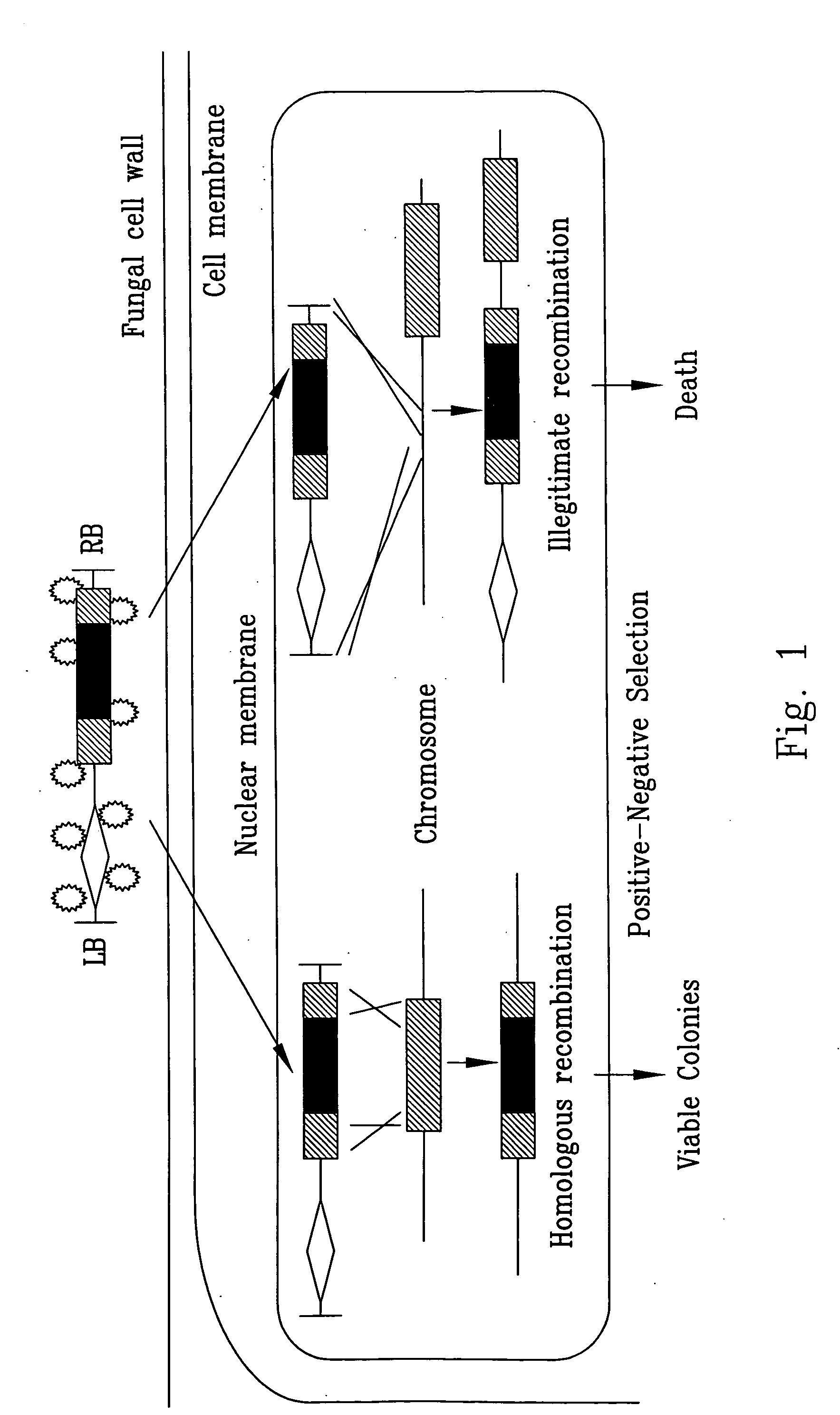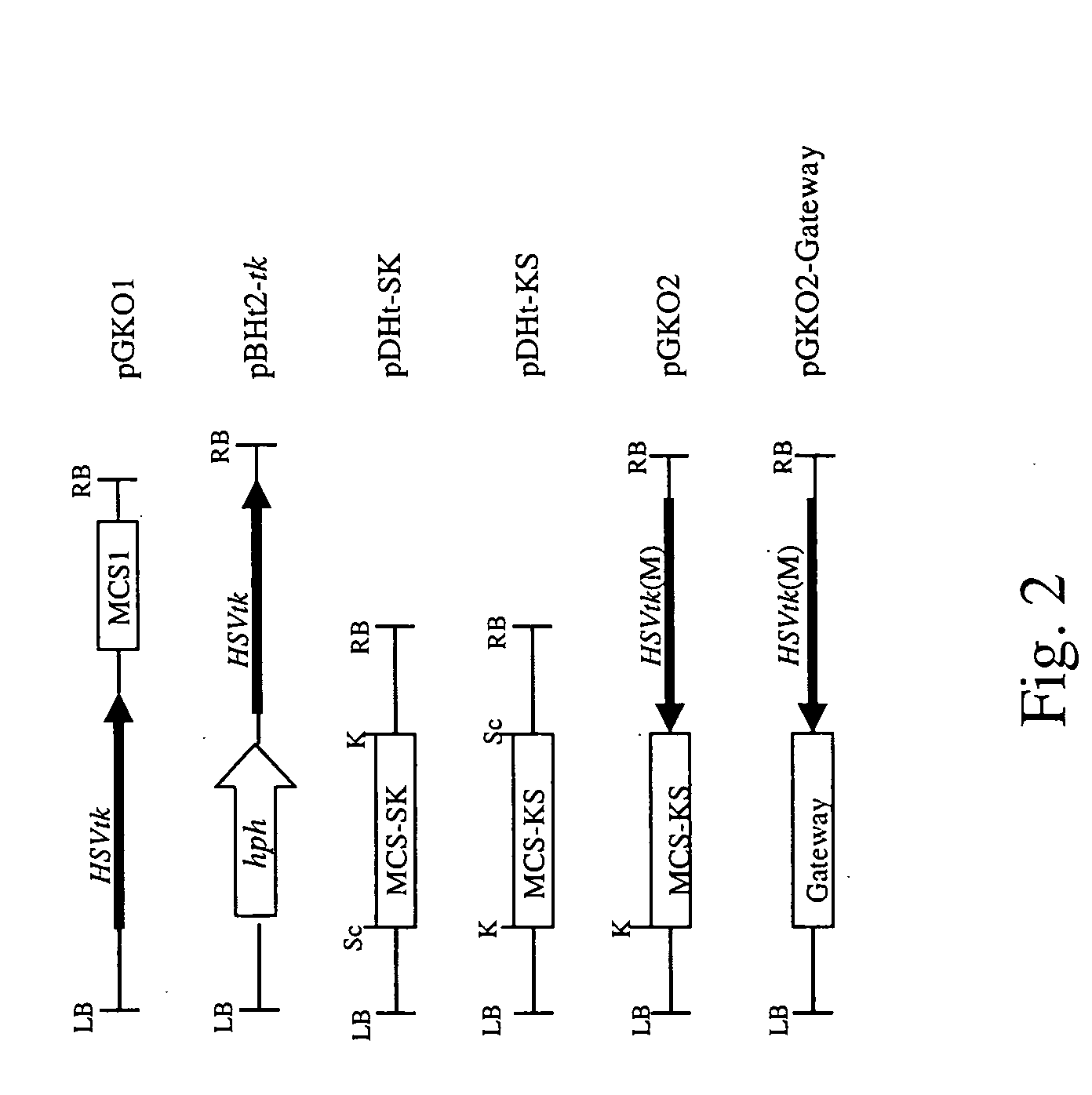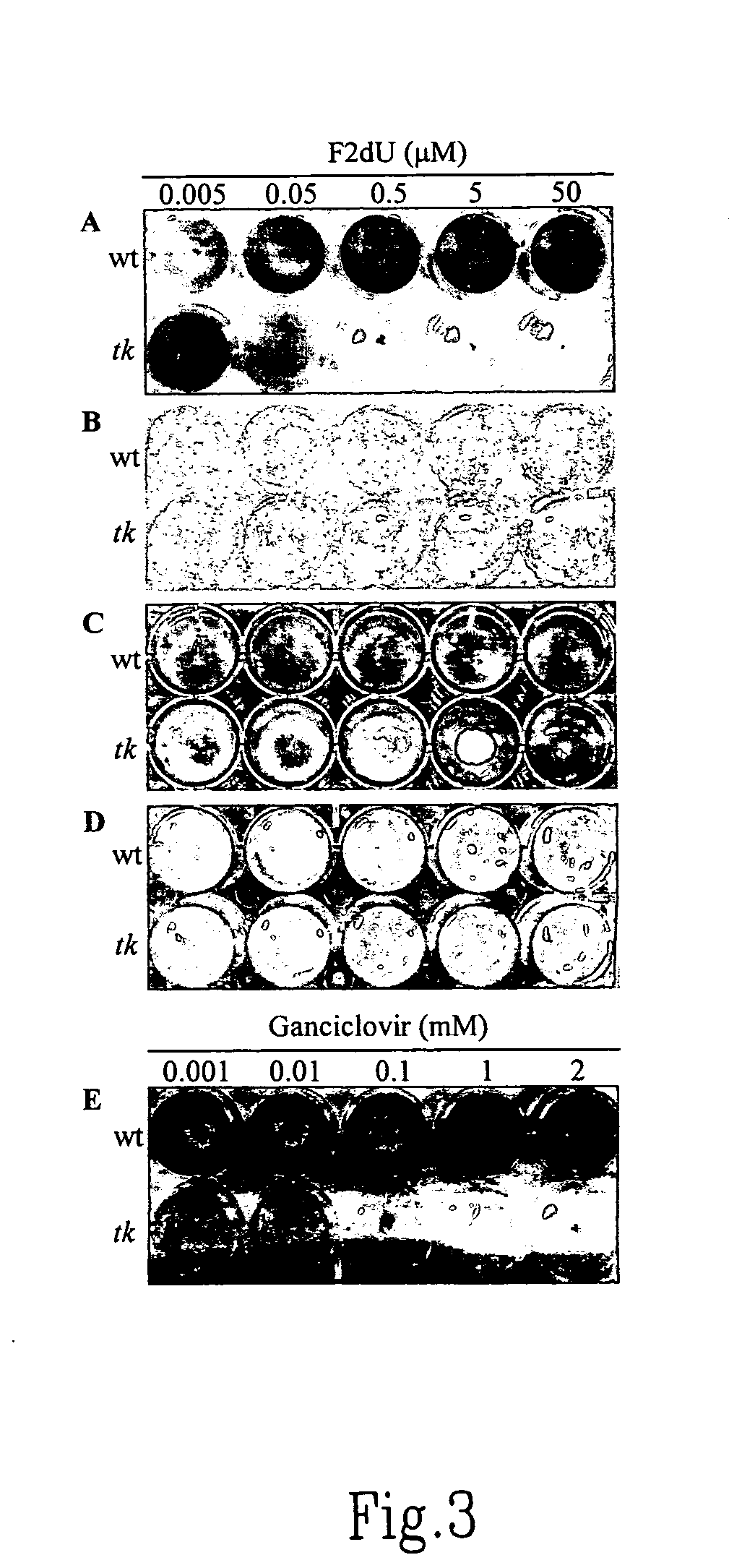Dual selection based, targeted gene disruption method for fungi and fungus-like organisms
a technology of fungi and fungus, applied in the field of dual selection based, targeted gene disruption method for fungi and funguslike organisms, can solve the problems of serious socioeconomic hardship, fungi also present a direct threat to human health, and the disease of plants and/or animals is devastation, and achieves high efficiency
- Summary
- Abstract
- Description
- Claims
- Application Information
AI Technical Summary
Benefits of technology
Problems solved by technology
Method used
Image
Examples
example 1
Vector Construction
[0102] Schematic diagrams of the T-DNA of the binary vectors constructed in this study are shown in FIGS. 2 and 5. The ChGPD-HSVtk construct (1.8 kb EcoRI-HindIII fragment) in pGEM-3Zf (Promega) consists of three modules: the ChGPD promoter (0.5 Skb EcoRI-BamHI fragment), the open reading frame (ORF) of HSVtk (1.1 kb BamHI-SalI fragment), and the N. crassa β-tubulin gene terminator (0.2 kb SphI-HindIII fragment). Individual modules were constructed by PCR using a pair of primers containing appropriate restriction sites. All the modules were sequenced to verify their sequence.
[0103] Plasmid pBHt2-tk was constructed by cloning the 1.8 kb EcoRI-HindIII fragment carrying ChGPD-HSVtk between EcoRI and HindIII sites of pBHt2 (Mullins et al., 2001). To construct pGKO1, the 1.8kb EcoRI-HindIII fragment was made blunt by treating it with Klenow fragment in the presence of dNTPs, and cloned between the blunted XhoI and BstXI sites of pCAMBIA1300 (www.cambia.org.au). To pr...
example 2
Herpes Simplex Virus Thymidine Kinase (HSVtk) Functions As A Negative Selection Marker In Diverse Fungi
[0108] A negative selection marker (a gene conferring lethality or easily discernable phenotype when expressed in transformants) flanking a mutant allele (generated by an insertion of a positive selection maker, such as the hygromycin B resistance gene) should allow quick identification of a target mutant without having to screen a large number of transformants by Southern or PCR (FIG. 1). Ectopic transformants will express both the negative and positive selection marker genes; while transformants resulted from gene KO should lack the negative selection marker.
[0109] Two genes were tested, one (Dtx-A) encoding diphtheria toxin subunit A, and the other (HSVtk) encoding a viral thymidine kinase, as potential negative selection markers for fungi. Although Dtx-A has been successfully utilized as a negative selection marker in plants (Czako and An, 1991; Terada et al., 2002), Dtx-A, e...
example 3
Mutagenesis of F. oxysporum and M. grisea genes via ATMT-PNS.
[0111] Two genes were utilized, F. oxysporum FoSNF1 (Ospina-Giraldo et al., 2003) and M. grisea MHP1 (a hydrophobin gene, unpublished result), to evaluate factors affecting the efficiency of gene knock-out (KO) via ATMT-PNS. To determine if bacterial strain-specific differences affected the efficiency of gene KO, we introduced gene disruption vectors pGKOl -fosnf1 and pGKO1-mhpl (FIG. 4) into two different A. tumefaciens strains, AGL1 and EHA105 (Klee, 2000). Two strains of M. grisea, KJ201 (Park et al., 2000) and 4091-5-8 (Valent et al., 1986), were also employed to evaluate fungal strain-specific differences. Hygromycin B-resistant transformants from two or more independent transformation experiments (multiple plates in each experiment) were pooled and analyzed for their sensitivity to F2dU and the presence of target mutation (Table 1).
TABLE 1Analysis of transformants generated with pGKO1-fosnf1 and pGKO1-mhp1.ClonesF...
PUM
| Property | Measurement | Unit |
|---|---|---|
| Electrical resistance | aaaaa | aaaaa |
| Strain point | aaaaa | aaaaa |
Abstract
Description
Claims
Application Information
 Login to View More
Login to View More - R&D
- Intellectual Property
- Life Sciences
- Materials
- Tech Scout
- Unparalleled Data Quality
- Higher Quality Content
- 60% Fewer Hallucinations
Browse by: Latest US Patents, China's latest patents, Technical Efficacy Thesaurus, Application Domain, Technology Topic, Popular Technical Reports.
© 2025 PatSnap. All rights reserved.Legal|Privacy policy|Modern Slavery Act Transparency Statement|Sitemap|About US| Contact US: help@patsnap.com



